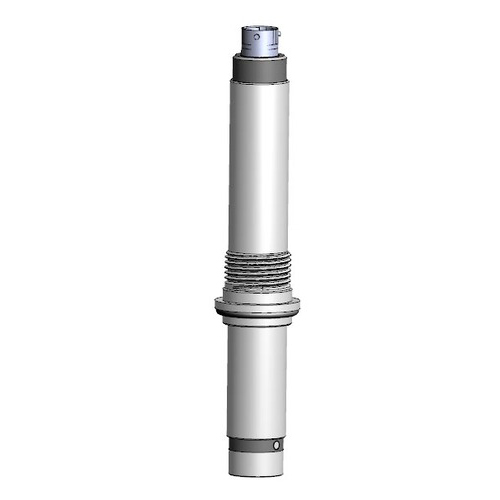Industrial water treatment systems are complex and dynamic, and, as a result, they are subject to the build-up of scale, corrosion, deposition, and biological fouling over time. If left untreated, they can develop into problems, including equipment damage, loss of process control, inefficient energy usage, safety hazards, and environmental violations. To reduce such issues, chemical additives in the form of inhibitors are added. Maintaining treatment levels within the control limits is necessary to minimize costs and optimize performance. However, taking accurate measurements of these inhibitors using most methods can be challenging. This is where fluorescent dyes such as PTSA play a vital role.
In this article, we will explore PTSA, its uses in water treatment facilities and other applications, and how to measure it.
What is PTSA?
Para-toluenesulfonic acid (CH3C6H4SO3H), otherwise known as PTSA, is a safe and versatile compound that has strong fluorescent properties. It belongs to the class of aromatic sulfonic acids and is a colorless crystalline solid at room temperature. This allows for convenient weighing and storage. It is soluble in water, alcohol, and other polar organic solvents. In addition, it is non-toxic and chemically stable. All these attributes make it ideal to use as a fluorescent tracer.
Uses in Water
Water treatment service providers can blend small amounts of PTSA into their chemical products. The PTSA in these blended products is measured and used to control the level of active chemicals in the system. Fluorometers that are configured to measure PTSA are extremely sensitive, and they can detect a wide range of concentrations. Since the ratio of PTSA to chemical treatment can be controlled in the blended product, measuring PTSA can precisely determine the amount of active ingredient. The PTSA fluorometer output is connected to a control cabinet and chemical feed system to maintain the proper treatment levels within the system. Fluorometers can detect very low levels of PTSA, so the ratio between the PTSA and treatment product can be large. For example, 100 ppb of PTSA can represent an active chemical level of 50 ppm or more.
Apart from water treatment, this chemical serves as a dye tracer in measuring, mapping, and monitoring water systems. As a dye tracer, PTSA can be used to effectively:
- Measure water flows
- Study and model surface and groundwater systems
- Trace contaminants in emergency response situations
- Detect leaks and measure tank retention times
PTSA’s fluorescent response is instantaneous, and it is relatively stable in changing temperatures compared to other fluorescent dyes. Fluorometers have a very fast measurement rate, typically less than 500 msec. These properties are ideal for real-time analysis of closed-loop systems.
Other Applications
Besides uses in water, PTSA is used in several other industrial applications, including:
- Catalyst in Organic Synthesis: Generally, PTSA serves as a catalyst in various organic synthesis reactions. Its acidic nature facilitates reactions such as esterification, acetylation, and Friedel-Crafts alkylation. This catalytic property makes it a valuable tool in the production of pharmaceuticals, fragrances, and specialty chemicals.
- Polymerization: In polymerization reactions, PTSA serves as an initiator and regulator. It helps control the molecular weight and structure of polymers, thereby contributing to the production of polymers with specific properties.
- Acid-Catalyzed Reactions: Due to its strong acidity, PTSA often serves in acid-catalyzed reactions like hydrolysis and dehydration. This is particularly useful in the synthesis of certain organic compounds and intermediates.
- Dye Synthesis: PTSA plays a crucial role in the synthesis of pigments and dyes. Its involvement in the production of colorants highlights its significance in the textile and dyeing industry.
- Standardizing Equipment: PTSA is an ideal lab standard for standardizing fluorometers configured for detecting crude oil, CDOM/FDOM, etc. UV sensors across multiple applications, either from the same or different manufacturers, can also be used to report values in a standard measurement unit. This makes it easier to compare instrumentation deployed at long distances from each other.
How to Measure PTSA
Because PTSA mostly serves as a fluorescent dye, the most common way of measuring it is via spectrophotometric methods. These methods entail assessing the concentration of PTSA by measuring its absorbance at a specific wavelength. For example, fluorometer sensors configured for PTSA emit UV light, and receive a response around 410 nm in the presence of PTSA dye. This is currently the easiest and quickest way of measuring PTSA concentrations in water. Other methods of checking concentrations include:
- Titration: This is a classical technique for determining the concentration of an acid in a solution. Generally, a known concentration of a base, often sodium hydroxide, is slowly added to the PTSA solution until the acid is completely neutralized. A pH indicator serves to determine the endpoint.
- Chromatography: Techniques such as high-performance liquid chromatography (HPLC) or gas chromatography (GC) can serve to separate and quantify PTSA in complex mixtures. These methods offer high sensitivity and precision.
- Nuclear Magnetic Resonance (NMR): This provides insights into the molecular structure of PTSA and can serve as a quantitative analysis tool. By integrating the NMR signals corresponding to specific protons in PTSA, the concentration can be determined.




